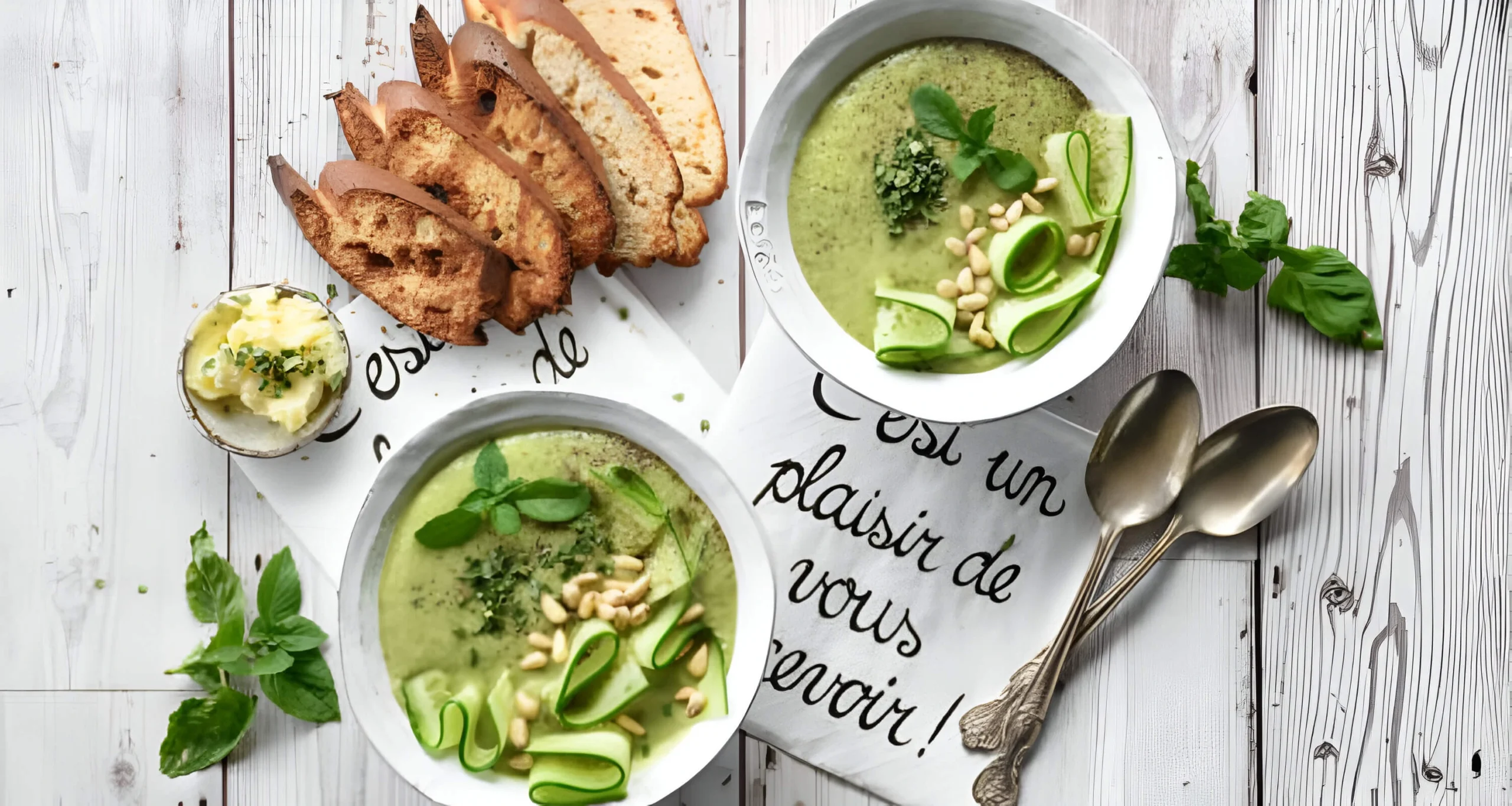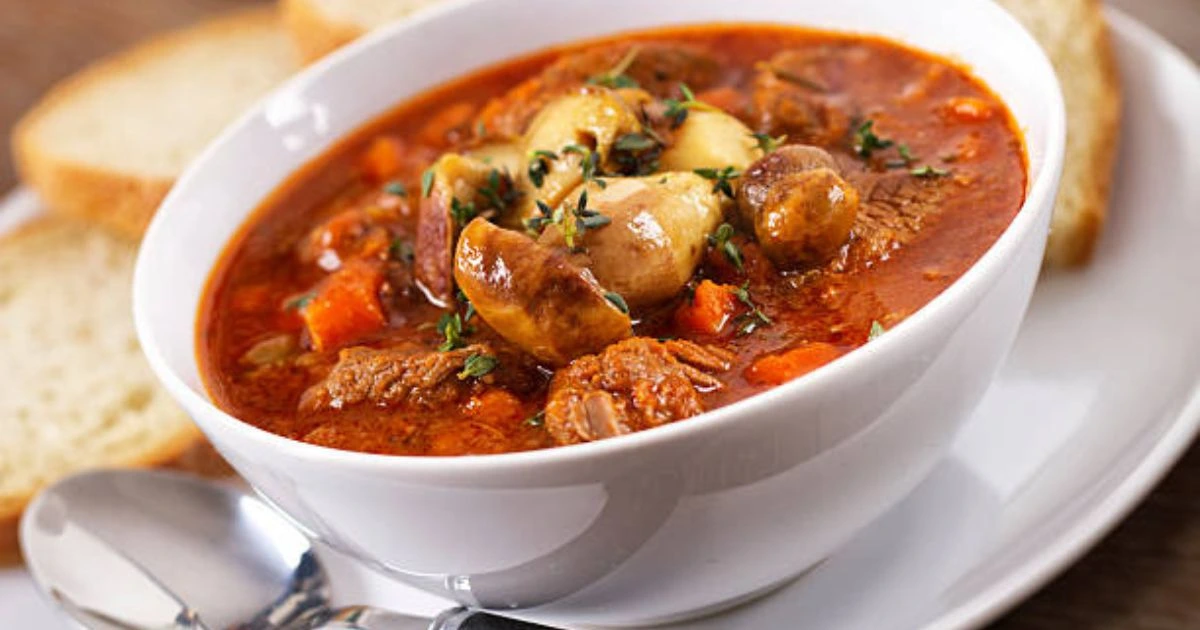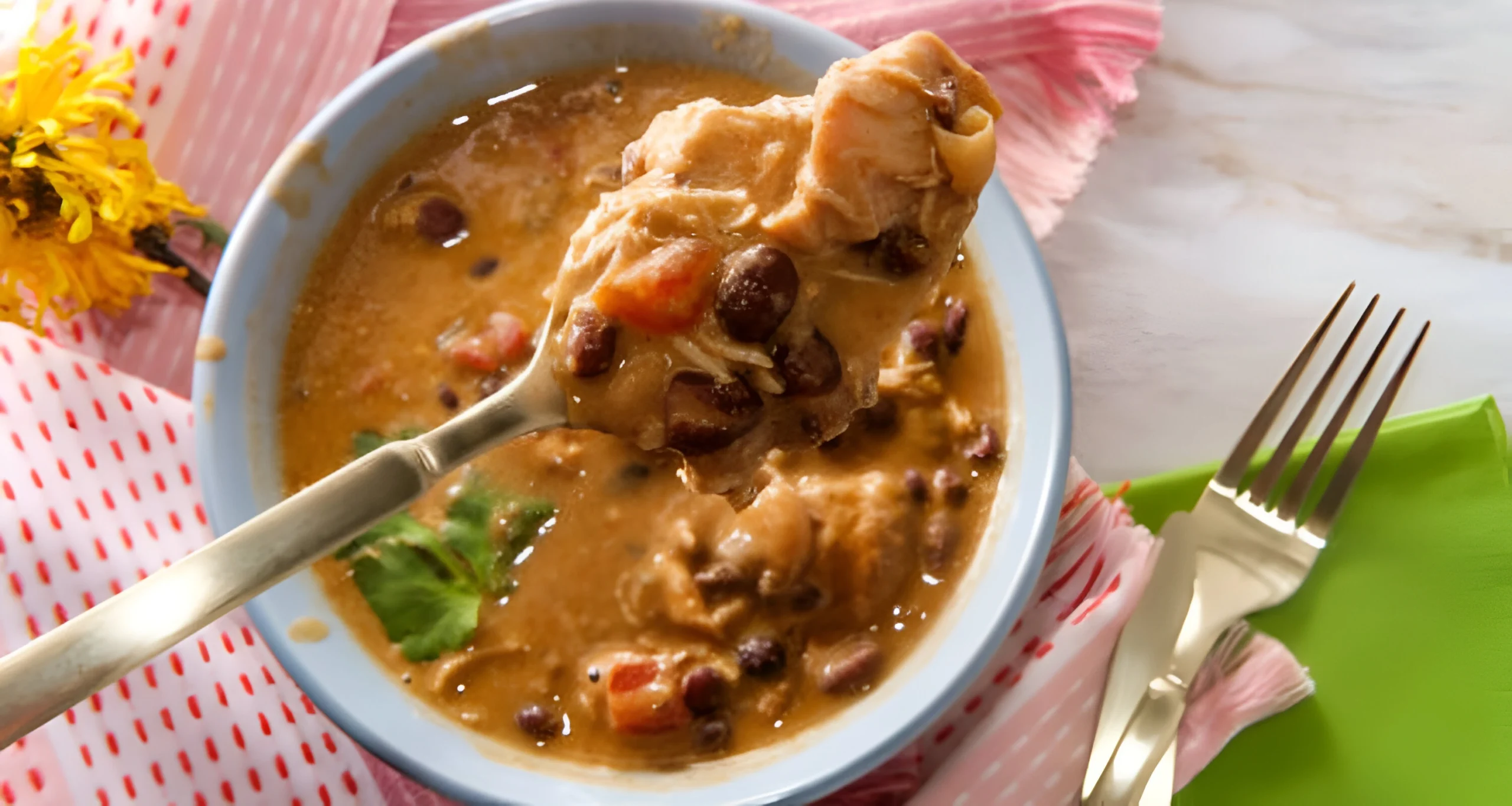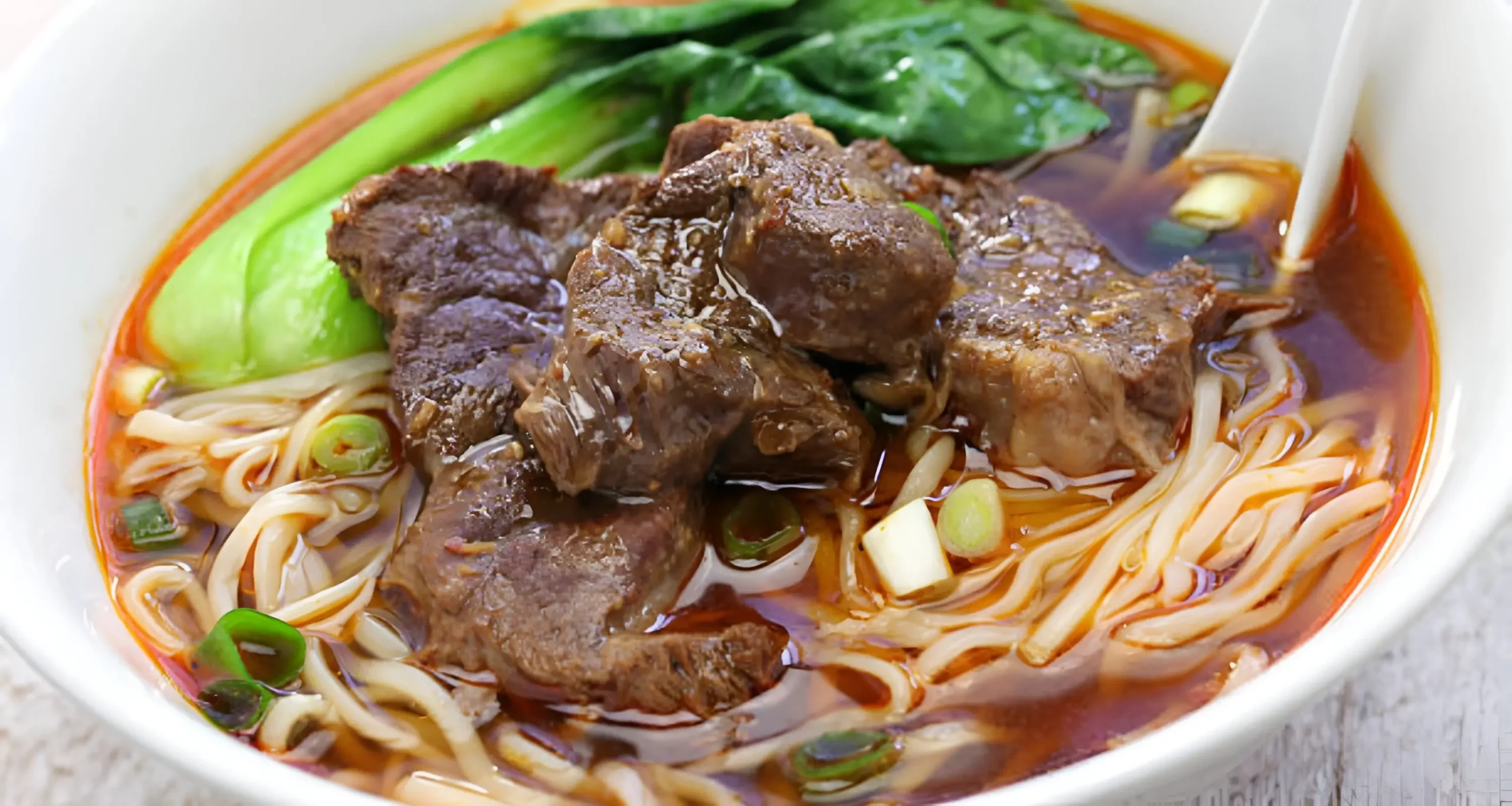Uncover Top Soup Bone Secrets: Rich Broth Flavor Unleashed

Explore the world of soup bones and see how they can change your cooking. Making bone soup is an art that makes home cooking special. It’s for both seasoned chefs and curious home cooks who want to add amazing flavors to their dishes.
Soup bones are more than just leftover meat. They open the door to rich, satisfying broths filled with cooking wisdom passed down through generations. Starting your bone broth journey here will change how you make soups, stews, and hearty meals.
Both professional chefs and home cooks know that great broth starts with quality soup bones. This guide will show you how to pick, prepare, and master making incredible bone broths. These will impress your family and friends.
Key Takeaways
- Soup bones are essential for creating deeply flavored broths
- Bone broth offers both culinary and nutritional benefits
- Proper selection and preparation are key for exceptional results
- Making bone soup is a skill that gets better with practice
- Quality ingredients make the biggest difference in broth making
Understanding the Magic of Soup Bones: A Culinary Foundation
Soup bones are the secret to making rich, flavorful broths. They turn simple meals into culinary masterpieces. The right bones are key to a robust and nutritious base for soups and stews.
Choosing the perfect bones is an art that can take your cooking to new levels. Different bones bring unique flavors and nutrients to your soup.
Types of Bones for Superior Broth Making
- Beef Bones: Known for rich, deep flavors
- Chicken Bones: Lighter, more delicate taste
- Pork Bones: Offer a subtle, sweet undertone
- Marrow Bones: Provide exceptional richness
Nutritional Benefits of Bone-Based Broths
Bone broths are full of essential minerals and proteins. They offer:
- High collagen content
- Mineral-rich nutrients
- Amino acids that support joint health
- Natural immune system boosters
Why Marrow Matters in Your Broth
Marrow is the secret to a gourmet broth. It adds depth and a silky texture. It also intensifies the flavor of your soup.
The key to an exceptional broth lies in understanding the unique properties of different bones and their marrow.
Essential Equipment for Perfect Bone Broth Preparation
Preparing delicious beef soup bones needs the right kitchen tools. Your equipment can greatly affect the quality of your bone broth. Choosing the perfect cooking vessel and accessories will make your bone broth experience amazing.
When learning how to cook beef soup bones, you’ll need several key pieces of equipment:
- Large stockpot (stainless steel recommended)
- Slow cooker or crockpot
- Pressure cooker
- Fine-mesh strainer
- Large ladle
- Glass or ceramic storage containers
Different cooking methods offer unique advantages for preparing beef soup bones. Here’s a quick comparison:
| Cooking Method | Pros | Cooking Time |
|---|---|---|
| Stockpot | Traditional method, direct heat control | 6-8 hours |
| Slow Cooker | Hands-off, consistent temperature | 12-24 hours |
| Pressure Cooker | Quick, retains nutrients | 2-3 hours |
“The right equipment transforms bone broth from a simple recipe to a culinary art form.” – Professional Chef
Pro tip: Invest in high-quality, durable kitchen tools. Stainless steel and ceramic equipment will serve you best when creating rich, flavorful bone broths.
Selecting Premium Soup Bones: A Buyer’s Guide
the right beef soup bones can make your cooking amazing. It’s all about picking high-quality bones for great taste and health benefits.
Finding the right soup bones takes some knowledge and careful picking. The quality of your broth depends on the best ingredients you choose.
Where to Source Quality Bones
- Local butcher shops with grass-fed beef selections
- Farmers markets specializing in organic meats
- Specialty meat stores with dedicated bone sections
- Online meat delivery services
Signs of Fresh vs. Aged Bones
Freshness is key when picking beef soup bones. Here’s how to spot the difference:
| Fresh Bones | Aged Bones |
|---|---|
| Bright pink or red color | Deeper reddish-brown tone |
| Minimal odor | Slight gamey smell |
| Firm texture | Slightly drier appearance |
Different Cuts and Their Unique Properties
Not all beef soup bones are the same. Marrow bones, knuckle bones, and oxtails each add something special to your broth.
“The secret to an incredible bone broth lies in selecting the right bones with care and intention.” – Chef Michael Rodriguez
Knowing about bone selection can take your soup-making to the next level. It makes your broths rich and flavorful, impressing everyone.
The Art of Preparing Soup Bones Before Cooking
Making a great bone soup begins long before you start cooking. Preparing soup bones right can turn a simple broth into a flavorful feast. Learning the best ways to prepare your bones will make your soup taste amazing.
Getting your soup bones ready is key to a tasty broth. Here are some important steps:
- Roasting bones to intensify flavor profiles
- Blanching to remove unwanted impurities
- Cracking or cutting bones to expose marrow
- Trimming excess fat and connective tissue
Roasting your soup bones before cooking makes them taste better. Put your bones on a baking sheet and roast at 400°F for 30-45 minutes. They should turn golden-brown. This step adds depth and richness to your broth.
| Bone Type | Preparation Method | Flavor Impact |
|---|---|---|
| Beef Marrow Bones | Roast at 400°F | Rich, Intense |
| Chicken Bones | Light Roast or Blanch | Subtle, Clean |
| Pork Bones | Blanch and Skim | Mild, Smooth |
Blanching is also important. It means briefly boiling bones to get rid of blood and dirt. Pour boiling water over bones, let sit for 2-3 minutes, then rinse with cold water. This makes your broth clearer and cleaner.
“Great broth begins with great preparation” – Traditional Culinary Wisdom
Spending time on soup bone prep makes your broths unforgettable. Every step is important in turning simple bones into a delicious broth for your kitchen.
Mastering the Basic Soup Bone Broth Recipe
Making a tasty soup bones recipe is all about mastering basic techniques. It turns simple ingredients into a rich, flavorful broth. Cooking beef soup bones well takes patience and focus. The right steps can boost your cooking skills and make a nutritious base for many dishes.
- High-quality beef soup bones
- Fresh organic vegetables
- Kosher salt
- Fresh herbs (thyme, rosemary)
- Whole peppercorns
Key Ingredients for Enhanced Flavor
The secret to a great soup bones recipe is using the best ingredients. Pick bones with visible marrow for more flavor. Grass-fed beef bones taste better and are healthier. Roasting bones first makes them even richer.
Step-by-Step Cooking Process
- Preheat oven to 425°F
- Arrange bones on a roasting pan
- Roast for 30-45 minutes until golden brown
- Transfer bones to a large stockpot
- Cover completely with cold water
- Simmer on low heat for 12-24 hours
Proper Seasoning Techniques
Seasoning beef soup bones needs a light hand. Add salt a little at first, letting flavors grow. Taste and adjust seasonings near the end. A bit of sea salt and fresh pepper can make your broth amazing.
Pro tip: Skim foam from the surface often to keep your broth clear and clean-tasting.
Common Mistakes to Avoid When Making Bone Broth
Making the perfect bone broth needs skill and focus. Many cooks accidentally ruin their broth by making big mistakes. These errors can hurt the taste and health benefits.
- Boiling Instead of Simmering: Aggressive boiling can make the broth cloudy and bitter. It’s better to simmer gently to get rich flavors.
- Overlooking Impurity Skimming: Not removing foam and impurities can make the broth look and taste bad.
- Incorrect Water Quantity: Too much water can water down the flavor. Too little water stops the bones from giving up their nutrients.
Knowing how to use beef soup bones means mastering temperature and technique. Cooking slowly and low helps break down collagen and get the most nutrients.
| Mistake | Consequence | Solution |
|---|---|---|
| High Heat Cooking | Bitter, Tough Broth | Maintain Low Simmer |
| Insufficient Cooking Time | Weak Flavor Profile | Cook 12-24 Hours |
| Neglecting Skimming | Cloudy Appearance | Remove Foam Regularly |
Experts say to use fresh, quality beef bones and keep the cooking temperature steady. Success in making bone broth comes from patience and careful technique.
Advanced Techniques for Rich and Clear Broths
Making the perfect soup bone broth is more than just cooking. Professional chefs use special skills to turn a simple stock into a masterpiece. This process requires precision and expertise.
To make your soup bone broth clear and full of flavor, you need to know some secret techniques. These include controlling the temperature and using advanced straining methods. These are key to making a broth that’s both delicious and clear.
Temperature Control for Optimal Extraction
Temperature is key when making bone soup. The clarity and taste of your broth depend on it. Here are some temperature tips:
- Start with cold water to get the most nutrients
- Keep the heat between 180-190°F for a gentle simmer
- Avoid boiling too fast, as it can cloud the broth
- Use a kitchen thermometer for accurate heat control
Skimming and Straining Secrets
Professional chefs have special ways to make their soup bone broth perfect:
| Technique | Purpose | Recommended Tool |
|---|---|---|
| Foam Skimming | Remove impurities | Fine-mesh skimmer |
| Initial Blanching | Reduce protein scum | Large stockpot |
| Multiple Straining | Achieve crystal clarity | Cheesecloth or fine-mesh sieve |
By using these advanced techniques, you can turn your soup bone into a broth that’s restaurant-quality. It will be rich in flavor and look amazing.
Enhancing Your Broth with Aromatics and Herbs
Making a great soup with beef bones is more than just cooking. It’s about choosing the right aromatics and herbs. These ingredients turn your broth into something truly special. Your soup can become a work of art with the right flavors.
When making your bone broth, think about these classic enhancers:
- Onions (whole or quartered)
- Garlic cloves
- Fresh bay leaves
- Celery stalks
- Fresh parsley stems
Looking for something different? Try these unique herb mixes:
| Herb Combination | Flavor Profile |
|---|---|
| Lemongrass + Ginger | Bright, Citrusy |
| Star Anise + Cinnamon | Warm, Aromatic |
| Thyme + Rosemary | Earthy, Robust |
When to add aromatics is key. Adding them early lets flavors meld together. Adding herbs later keeps their taste fresh. Try different mixes to create your own special soup that wows everyone.
Pro tip: Always add fresh herbs in the last 30 minutes of cooking to maintain their vibrant flavors and nutritional benefits.
Storage Solutions for Homemade Bone Broth

After making your beef soup bones broth, it’s important to store it right. This keeps its taste and nutrients fresh. You need to know how to keep your broth good for longer.
Storing your homemade bone broth needs some planning. Cool it down fast and pick the right containers. This stops bacteria and keeps the broth tasting great.
Freezing Methods and Tips
Freezing is the best way to store your bone broth. Here are some tips for freezing:
- Use silicone ice cube trays for small, portioned servings
- Transfer frozen cubes to freezer-safe bags for compact storage
- Label containers with date and contents
- Allow space for liquid expansion during freezing
Proper Container Selection
Picking the right containers is key for your bone broth’s quality. Glass and top-notch plastic containers are best. They keep your broth safe from bad tastes or chemicals.
Pro tip: Go for containers with tight lids to avoid freezer burn. This keeps your broth’s flavor rich. Glass mason jars or BPA-free plastic are great for storing your bone broth.
Creative Ways to Use Leftover Soup Bones
Don’t throw away your soup bones after making broth! They are full of nutrients and can be used in many ways. You can turn them into something new and useful, beyond just broth.
Here are some creative ways to use leftover soup bones:
- Create a second batch of lighter broth by reusing the bones
- Prepare nutrient-rich pet treats
- Use ground bones as organic garden fertilizer
- Extract remaining marrow for gourmet cooking
When thinking about what to do with beef soup bones, you have many options. The marrow inside is very valuable. You can spread the marrow on toast, mix it into mashed potatoes, or add it to other dishes for extra flavor.
| Bone Use | Benefits | Preparation Method |
|---|---|---|
| Second Broth Batch | Additional nutrients, reduced waste | Simmer bones again with fresh vegetables |
| Pet Treats | Natural dental chew, nutritional supplement | Roast and clean bones thoroughly |
| Garden Fertilizer | Mineral-rich soil amendment | Grind bones into fine powder |
If you garden, soup bones can be a great fertilizer. By grinding clean, dried bones into a fine powder, you make a mineral-rich supplement. This can improve soil quality and help plants grow better.
Pro tip: Always ensure bones are completely clean and free from any meat residue before repurposing them for alternative uses.
Health Benefits and Traditional Uses of Bone Broth
Bone broth is more than a tasty addition to your meals. It’s a nutritional powerhouse that has been valued for centuries. Making bone soup is not just cooking a meal. It’s creating a healing drink full of health benefits.
Bone broth is a remarkable natural supplement for your health. It’s packed with minerals, amino acids, and essential nutrients. This traditional food offers many health benefits.
Immune System Support
Bone broth boosts your immune system. The nutrients in soup bones help your body fight off diseases:
- Reduces inflammation
- Supports white blood cell production
- Provides essential minerals like zinc and selenium
Joint Health and Collagen Benefits
Bone broth is great for your joints. Adding a soup bones recipe to your diet supports:
- Cartilage regeneration
- Reduced joint pain
- Improved skin elasticity
“Let food be thy medicine and medicine be thy food” – Hippocrates
Bone broth has been used worldwide for its health benefits. From Chinese medicine to European grandmother’s recipes, it’s a treasure. By learning about its health benefits, you can improve your nutrition.
| Nutrient | Benefit |
|---|---|
| Collagen | Supports joint and skin health |
| Glycine | Improves sleep quality |
| Glutamine | Supports gut health |
Embrace the ancient wisdom of bone broth and discover a natural path to wellness through your kitchen.
Transforming Basic Broth into Gourmet Soups

Turning a simple broth into a gourmet soup is easier than you think. Learning to cook beef soup bones opens up a world of creativity. It can make your home cooking stand out.
First, think about the flavor you want. A rich beef bone soup is a great base for many gourmet soups. Here are some ways to make your broth better:
- Roast vegetables before adding them to intensify their flavors
- Incorporate fresh herbs like thyme, rosemary, or bay leaves
- Use premium ingredients like truffle oil or aged cheese as garnishes
- Experiment with international spice blends
Pro tip: Always strain your bone broth carefully to ensure a crystal-clear base for your gourmet soup.
“Great soup is about layering flavors and respecting each ingredient” – Chef Thomas Keller
Try making soups inspired by different cultures. You can make a French consommé, a Mexican pozole, or an Asian ramen. Each culture has its own way to make your broth special.
Garnishes are key to making your soup look and taste better. Add crisp croutons, fresh herbs, a drizzle of olive oil, or a sprinkle of sea salt. These touches can make a big difference in your soup with beef bones.
Conclusion
Exploring soup bones has opened a world of flavors and nutrition. It’s not just cooking; it’s an art that connects us to our culinary roots. You’ve learned how to pick the best soup bones and extract their flavors, improving your kitchen skills.
Bone broth is more than soup. It’s a versatile base for many dishes, adding depth and nutrition. It’s perfect for those looking to enhance flavors, get more nutrients, or reduce waste in the kitchen.
Now, you can experiment with different bones and flavors. Each batch of bone broth is a chance to get better and be creative. Start small, keep practicing, and watch your skills grow.
Learning to make soup bones is a journey. See each cooking session as a chance to learn and grow. Your hard work will pay off with delicious, healthy meals that show off your cooking skills.
FAQ
What are the best types of soup bones for making broth?
The top soup bones for broth are beef knuckles, marrow bones, oxtails, and short ribs. Beef bones add lots of flavor and nutrients. Marrow bones make the broth rich and deep.
Knuckle bones give a gelatinous texture. Oxtails add intense flavor and collagen.
How long should I cook soup bones to make a good broth?
Cook beef soup bones for 6 to 24 hours for the best flavor. Slow cooking releases all the bones’ goodness. Keep the heat low to get a clear, rich broth.
Do I need to roast soup bones before making broth?
Yes, roasting the bones is a must. Roast at 400°F for 30-45 minutes. This step makes the broth taste deeper and richer.
Can I reuse soup bones to make multiple batches of broth?
You can make 2-3 batches from the same bones. But each batch gets less flavorful. The first batch is the richest. Use fresh bones for the best taste.
What’s the best way to store homemade bone broth?
Store it in the fridge for 3-4 days or freeze for 6 months. Use airtight containers or freezer bags. Freezing in ice cube trays is great for portioning.
Are soup bones good for you?
Soup bones are very nutritious. They’re full of minerals, collagen, and amino acids. They can help with joint health, gut support, and immune function.
They also reduce inflammation. Adding them to your diet is a great choice for health.
How do I know if my soup bones are fresh?
Fresh bones smell clean and mild, and are bright red or pink. Avoid bones with strong smells or discoloration. Buy from trusted butchers or farmers markets.
Check for freshness to get the best flavor and nutrition in your broth.
Can I make bone broth in a slow cooker?
Yes, slow cookers are perfect for bone broth. They cook at a low heat for a long time. Just add bones, water, and veggies, then cook on low for 12-24 hours.
This method is easy and extracts lots of flavor and nutrients.
Add a Dash of Your Thoughts!
There are no reviews yet. Be the first one to write one.






